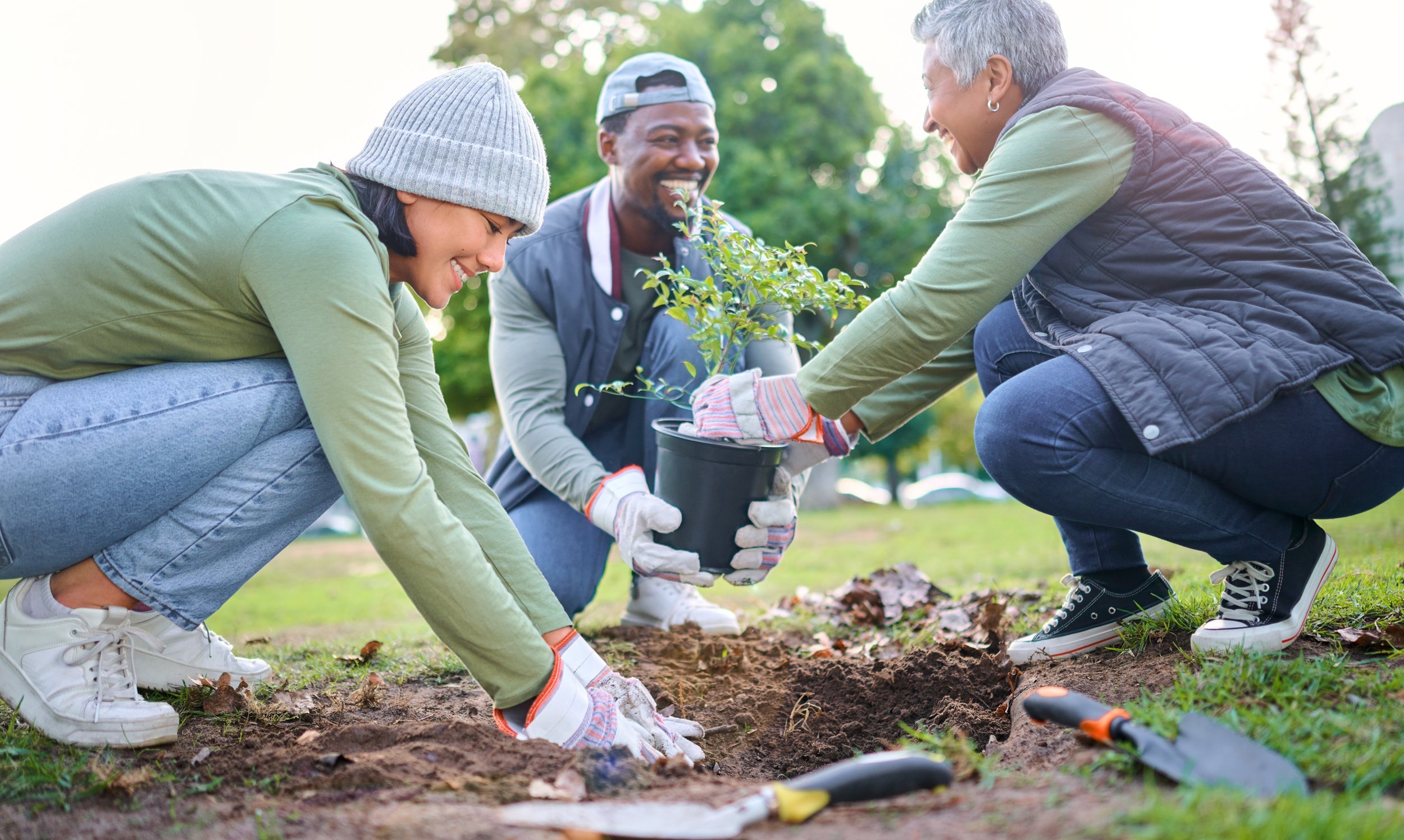
Plan a Local Project
Make your community a little greener and more welcoming environment for people and animals by planting trees with your neighbors and friends
Developing a Small-Scale Local Planting Project
A small-scale planting project (10-100 Trees) is a localized tree-planting initiative typically undertaken by a smaller group within the Rotary Fellowship of the Trees or an individual Rotary Club. These projects focus on planting trees within the local community, such as in parks, schools, urban settings, community gardens, along riverbanks, etc. They emphasize the active participation of Rotarians and Fellowship members, fostering a sense of community involvement and environmental stewardship.
This guide outlines the steps for planning and executing a small-scale local tree planting project, ideal for smaller groups within the Rotary Fellowship of the Trees or individual Rotary Clubs.
Identify a Planting Site:
Explore Local Opportunities: Look for suitable planting locations within your community, such as:
School grounds
Community parks
Vacant lots
Areas along riverbanks or streams
Anywhere with a need for trees
Consider Local Needs: Identify areas that could benefit from tree planting, such as those lacking shade, facing erosion, or needing habitat restoration.
Obtain Necessary Permits: Ensure the chosen site is suitable for tree planting and obtain any necessary permits from local authorities.
Choose Tree Species:
Select Appropriate Species: Choose tree species that are well-suited to the local climate, soil conditions, and environmental needs.
Consider Local Benefits: Select species that provide benefits to the community, such as shade, fruit production, wildlife habitat, or improved air quality.
Consult Local Experts: Seek advice from local arborists, nursery professionals, or forestry experts to ensure the best tree selections.
Recruit Volunteers:
Engage Fellow Rotarians: Encourage active participation from fellow Rotarians and members of the Rotary Fellowship of the Trees.
Spread the Word: Share the project with your Rotary Club and within the Fellowship network through emails, social media, and club meetings.
Organize a Volunteer Sign-up: Create a simple sign-up sheet or online form to track volunteer interest and coordinate participation.
Gather Materials:
Secure Trees: Purchase or obtain trees from local nurseries or tree suppliers.
Acquire Planting Supplies: Gather necessary tools and materials, such as shovels, gloves, watering cans, and mulch.
Seek Donations: Explore opportunities to secure donations of trees, supplies, or equipment from local businesses or community organizations.
Plan and Execute the Planting Day:
Schedule the Event: Set a date and time for the planting event, considering weather conditions and volunteer availability.
Provide Instructions: Provide clear instructions and safety guidelines to all volunteers.
Organize Logistics: Arrange for transportation, refreshments, and any other necessary logistics for the planting day.
Post-Planting Care:
Develop a Simple Care Plan: Create a basic care plan for the newly planted trees, including watering schedules and basic maintenance guidelines.
Assign Caretakers: Assign Rotarians or volunteers to be responsible for the ongoing care of the trees.
Monitor and Adjust: Monitor the health of the trees and adjust the care plan as needed.
Celebrate and Share:
Recognize Volunteers: Acknowledge and appreciate the contributions of all volunteers who participated in the project.
Share Successes: Share the project's successes with the wider Rotary community and the Fellowship of the Trees through photos, videos, and social media posts.
Planting more than 100 trees?
The planting of more than 100 trees in one project often requires more effort and planning. If your local planting project is large-scale, please consider following the Mass Planting Project (MPP) Process and allow our Board the chance to help you.

“It all begins with an idea. Maybe you want to launch a business. Maybe you want to turn a hobby into something more. Or maybe you have a creative project to share with the world. Whatever it is, the way you tell your story online can make all the difference.”
— Squarespace
